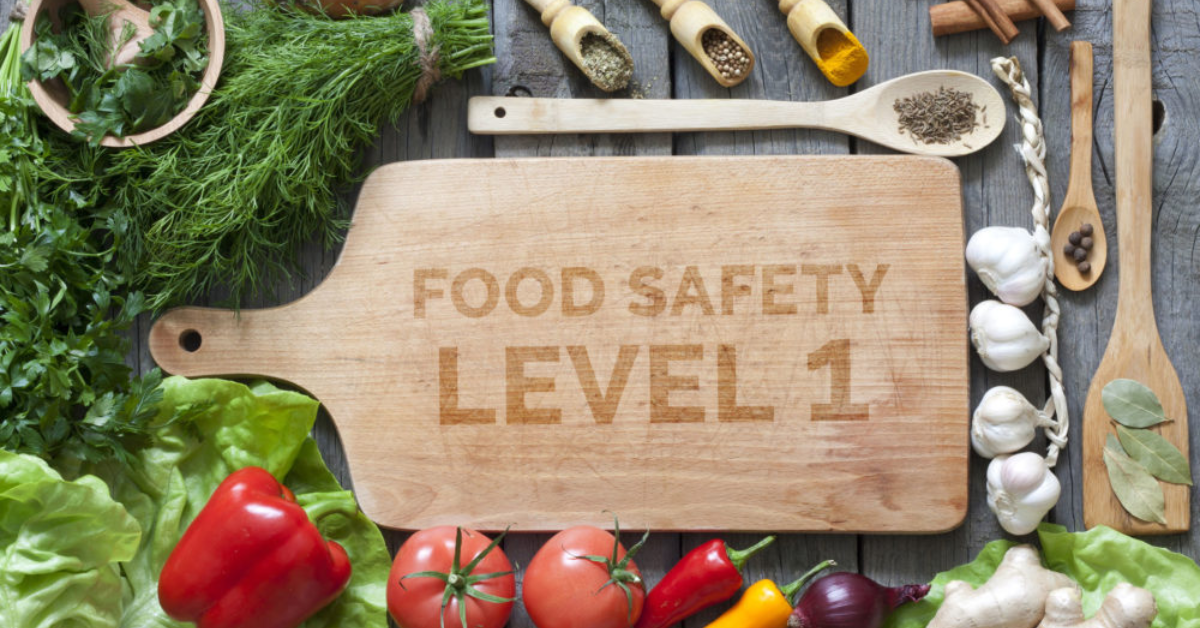Ensuring Safe Plates: Understanding the Food Safety Course Level 1
Food is more than just nourishment — it is a responsibility. Ensuring that every meal is safe from contamination requires knowledge, vigilance, and discipline. That’s where the Food Safety Course Level 1 steps in. Designed for beginners and people entering the food handling profession, this foundational course introduces the essential principles and practices of food safety. Whether you’re starting in catering, retail food service, or working in a school cafeteria, this course lays the groundwork for protecting public health, minimizing risks, and instilling confidence in consumers.
1. Why Food Safety Matters
Foodborne illnesses remain a persistent public health challenge worldwide. According to global estimates, millions of people are affected by food poisoning each year, many of which are preventable. When food handling, storage, or preparation practices are lax, the risk of bacteria, viruses, or toxins contaminating meals increases significantly. These illnesses can range from mild discomfort to life-threatening conditions, especially for vulnerable populations like young children, the elderly, and immunocompromised individuals.
In food industries, one single lapse — such as inadequate cooking, improper sanitation, or cross-contamination — can ruin reputations, invite regulatory penalties, or even close businesses. That’s why training in food safety is more than just a regulatory requirement; it’s a moral imperative.
2. What Is the Food Safety Course Level 1?
The Food Safety Course Level 1 is a foundational training designed for anyone who handles food — from kitchen assistants to servers, food packers to supervisors. It introduces the core concepts of safe food handling, without assuming prior knowledge or expertise.
Key objectives of the course typically include:
-
Teaching how food becomes contaminated and how to prevent it
-
Explaining basic microbiology relevant to food (e.g. bacteria, viruses, fungi)
-
Describing temperature control requirements
-
Instructing proper hygiene and personal cleanliness
-
Stressing the importance of cleaning and sanitizing procedures
-
Showing how to manage cross-contamination risks
-
Informing about laws, regulations, and responsibilities in food safety
By giving participants the basic vocabulary and practices, this course serves as the building block for further levels of training and more advanced roles in food safety management.
3. Course Structure and Delivery
Modules and Content
Typically, the Level 1 course is divided into several modules, each focusing on a specific theme. A standard layout might look something like this:
-
Introduction to Food Safety – Why food safety is important; historical outbreaks
-
Food Microbiology and Contamination – Pathogens, spoilage organisms, and their sources
-
Personal Hygiene and Health – Handwashing, protective clothing, managing illness
-
Cleaning, Sanitizing, and Pest Control – Methods, chemicals, and verification
-
Temperature, Time, and Storage – Cold chain, hot holding, cooling, frozen storage
-
Cross-Contamination and Allergens – Prevention strategies, separation, labelling
-
Waste Management and Recycling – Safe disposal and environmental considerations
-
Regulatory and Legal Aspects – Food safety laws, responsibilities, records and audits
Delivery Format
The course can be presented in different modes:
-
Classroom-based instructor-led training
-
Online modules or e-learning (self-paced)
-
Hybrid model (mix of online theory + in-person practical)
Many providers also include assessments (quizzes or tests) to confirm comprehension. Some may require a passing score to obtain certification.
4. Who Should Take It?
Food Safety Level 1 is appropriate for:
-
Kitchen helpers, dishwashers, food prep assistants
-
Waitstaff and servers
-
Retail food handlers (grocery, deli counters)
-
New employees in food businesses
-
School canteen workers, catering staff
-
Anyone entering the food industry with little or no prior training
It’s often mandatory in many sectors to ensure compliance with local health and safety regulations, and many employers consider it the bare minimum qualification for food handlers.
5. Learning Outcomes and Benefits
After completing this course, participants should be able to:
-
Recognize risks of contamination and understand how to mitigate them
-
Apply good personal hygiene and illness policies
-
Choose appropriate cleaning and sanitizing procedures
-
Manage safe storage, cooking, cooling, and reheating of food
-
Distinguish between allergens and know how to prevent allergen cross-contact
-
Understand the role of legislation and how to maintain records
For individuals, this leads to confidence, skill building, and better job prospects. For employers, a workforce trained in food safety reduces liability, improves product reputation, and enhances customer trust.
6. Challenges & Tips for Success
Challenges
-
Grasping microbiological concepts may seem abstract to beginners
-
Applying theory into daily practice consistently
-
Staying updated with changing regulations
-
Ensuring language or cultural barriers don’t impede understanding
Tips for Success
-
Use visual aids or hands-on demonstrations to bring concepts alive
-
Reinforce training with periodic refreshers
-
Incorporate real-world scenarios and role plays
-
Encourage a “food safety culture” where staff speak up about risks
-
Track performance and hold regular audits
7. Next Steps After Level 1
Level 1 is only the beginning. After mastering Level 1, trainees can progress to:
-
Food Safety Level 2 or Level 3 — more advanced knowledge, supervisory roles
-
Specialized courses in HACCP (Hazard Analysis Critical Control Point), food allergens, or audit readiness
-
Certification or audit agencies that may accept Level 1 as a stepping stone
By continuing the learning path, professionals can ascend to higher roles like food safety supervisor, quality assurance officer, or auditor in the food industry.
8. Why This Training Is Critical in Today’s World
With globalization, supply chains are more complex, food travels longer distances, and consumer expectations are higher. Many countries have stricter food safety regulations and public health agencies that impose heavy penalties for lapses. Also, with increased awareness about allergens and food intolerances, food handlers must understand not just microbial safety but also how cross-contact can affect vulnerable consumers.
In addition, in a post-pandemic world, people pay more attention to hygiene and safety, making any lapse in food handling much more visible to consumers.
Conclusion
The Food Safety Course Level 1 is more than a certificate — it’s a cornerstone for ensuring every plate presented to customers is safe. It empowers individuals entering the food industry with essential knowledge and practices and helps build the foundation of a safer, more trustworthy food chain. As you pursue this training, remember: food safety is not a one-time act, but a continuous commitment to better habits, updated knowledge, and constant vigilance.







